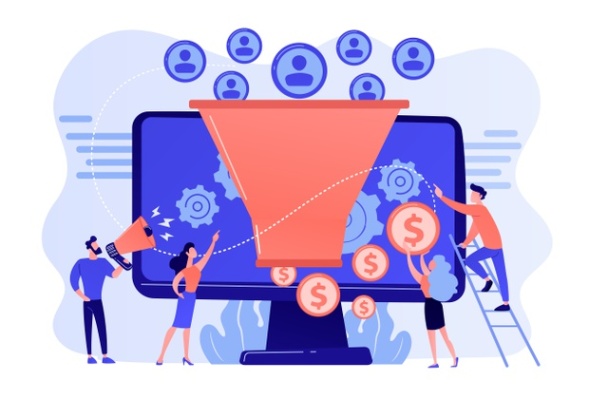Better and Efficient Ways to Improve Conversions

One of the ways to Improve Conversions is by strategically doing Follow Ups. Follow these best practices for converting more solar leads:
1. Send the requirement (Proposal/Quotation/Brochure) within a few minutes/hours of the Enquiry Call or Site Visit: This will make you appear more professional. This will help them review and make up their mind to an extent before you make the next follow up call. Delayed responses makes the customer lose interest and trust in the company, eventually pivoting them to a competitor or putting it off for later.
Tip: Make Proposals quickly on Solar Ladder in less than a minute!
2. Do a Follow-up Call on the Next Day without delay: It can be helpful to think of follow-up with solar leads and customers as elements that can add value to the customer and at the same time show how your company will be involved in adding that value.
- A Follow up should add value to the customer. Never Follow up to just “touch base”, communicate only when you have something to offer and add value.
Tip: Set a Task to complete the action before the Due Time. Use Notes to jot down the important points from the discussion with the customer
3. End each conversation with a clearly defined next step:
- Always try to conclude the conversation by mentioning what you’re planning to do next for them. This will help them know the status and progress of their installation.
- Ask if they have any special request or anything they would like to discuss/want you to be done with in your next conversation
Tip: Use Status Section to clearly define their Status, which can be used when you connect again with them to update them. Use Tasks/Notes to complete/specify the next steps and important information discussed
4. Find out what’s important to them
- Want to Save on their Electricity Bill
- Have a lot of Power Cuts which is why they want a battery setup
- Their Network (Friends, Family or Colleagues) has started getting installations done
- Government launched subsidy schemes on going solar which is why they got interested in the first place
Turn around your sales pitch around what's important to them and cater to those needs. Make sure you are providing effective solutions for the same.
5. Categorize the Leads: Understand where they are in the sales funnel and follow up accordingly. Don't make random calls. Understand where you last left off with them, decide what you want to discuss and then get in touch with them. To save time you can categorise them in three categories i.e. Hot, Cold and Warm. These can be further classified in the “Status” Section based on situations like the “Referral from Present Customer”, “getting quotes from other installers before deciding”, “Out of Town” or “On Vacation”, ”Just Busy but very keen”, “Conflict between decision makers” , “ Wants to be contacted after lockdown is lifted” and so on. This will help you understand when to call, what to call about and what to ask.
Tip: Use “Table View” for quick and better viewing of the statuses of all the customers
6. Get smaller Yesses, before the BIG YES!
A Customer is more likely to say YES to the big question (To Close the deal) if it has been followed by a series of “smaller yesses''. Now, to make sure of that, you need to keep the customer involved in each stage. Their involvement will make them feel like they are a significant part of the process and create a sense of ownership in them for every task that is being carried out. Work with them through each stage as if they are a part of your team. There is a higher chance of them approving each step if they were a part of its process. Psychologically, a person tends to trust something they have built or have been a part of. Some examples of this can be:
- Sitting with them and choosing the best panel and inverter brands for them (from the ones you offer) by offering different options and specification for each
- Taking tips and suggestions from them while deciding structure designs and location of installation
- Discussing alternative ways of getting the wiring/cabling done
The follow-up methods listed above can ensure that you use the best possible process to understand your prospects and eventually convert the leads.
After the proposal, Designs and Site Visit stage you’ll inevitably reach a point where it’s time to make that hard sales pitch — which means you’re close to sealing that deal. The goal at this stage is to assure customers of their decision and remove any lingering doubts or fears from the equation. Prospects at this stage are often deep in the competitive research phase. They’ve likely narrowed in on their top choices and are actively weighing the pros and cons of each.
At this stage you need to help them identify the role your company will play in helping them resolve their concerns and queries even after the installation is done. You need to communicate not only how your service works but also how it is better than all the other choices. This moves the needle from “my service can help you solve your problem” to “my service can help you solve your problem better than anyone else.”
If the customer is still skeptical about closing and asks for more time in order to delay their decision making, try and understand the reason behind that. Some of the potential ways to drive them towards making a decision is:
7. Hit the customer with a limited period discount/promotional offer at this stage. This will create a “sense of urgency” in them to make a quick buying decision. Many prospective customers respond positively to time-sensitive incentive offers. For example, you can offer a discount or free O&M or free/discounted Remote Monitoring System(RMS).
8. Most Customers just compare based on the prices and do not see the differences between proposals from different installers. So it is important to help them focus on the unique selling proposition of the brands and services that you offer with that “special” feature or features that will provide them with long-term benefits. Help them distinguish between these offerings and prices and how what you are offering has long term benefits, savings and lifespan.
- If you offer a galvanised structure for mounting or elevation the total structure costs tend to increase. You know it, the customer does not. It is thus important to make the customer understand that a strong structure is of utmost importance because it has to support the Panels for 25 years in different and adverse weather conditions 24*7. Tell them how a galvanised structure prevents corrosion and the structure from weakening over time
- If you use an electrical conduit to do the wiring/cabling it is very obvious that the price will go up. But then so does the life of the product and setup. You need to convey the same to the customer to help them understand where the price difference is coming from and how it is ultimately beneficial for them. This added equipment will prevent the time and added costs that might go into getting the wiring changed in coming few years
- If the solar brand you are promoting is a premium brand or is Mono Panel etc., explain it to your customers how these features will benefit them more than other solar brands. If these “other solar brands” are a part of the list of brands that your competitor might be offering for a lower price, you can do a comparative study between the two proposals and make it simpler for them to understand why yours is better and hence of a bit higher range.
3 Follow-Up Mistakes to Avoid
1. Never follow up with extremely open ended questions like, “What did you plan? or Made a decision?”. Always ask specific/defined/close ended questions to get the answer you want
2. Don't just touch base to “Just Follow Up”, communicate only when you have something to offer and add value. Otherwise it will just be another call in their call logs or email in their inbox. You can add value by:
-
- Sending Case Study of Solar showing how solar can solve the challenge of high electricity bills or a blog/article about what differentiates your company, repetition of the key messages you want to convey.
- Sending Datasheet of Panel and Inverter brands
- Send 3D Designs or Pictures of Solar Plants
3. Giving up after just follow up because it's not a hot enquiry:
In certain cases, following up isn’t feasible in short intervals or very frequently. You need to stay in touch with such prospects over the long term. This is because a prospect’s situation can change. What is not right for them right now may be right for them in a couple of months. Understand why they are Warm and not Hot. Sometimes they are just not sold on the ROI after repeated conversations or might not be in a great financial position right now to be able to afford a solar system. Read our blog on “Re-Targeting” to understand the various ways in which such prospects can be converted into customers
 Unergia
Unergia